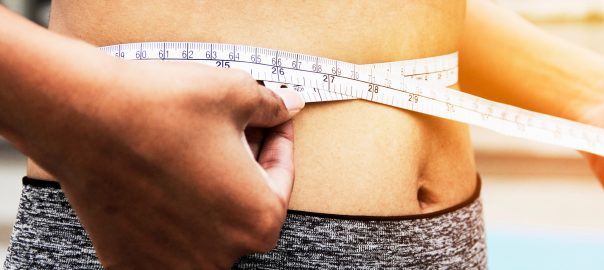
Helpful Guide To Lose Weight – The Low Carb Way
Losing Weight on a Low Carb Diet
A Basic Guideline and Sample Meal Plan
If you are looking to lose weight, then a low carb diet can help you get there. While setting a weight loss goal and committing to a regimen is great, it is equally important to understand what food to eat, what food to avoid and how to craft a proper meal plan.

Source: Instagram
You can’t just stop eating bread and hope for the best. You need the right tools and information to guide you through the process and to make sure you hit the ground running. Most people who have achieved weight loss via this method can attest to the fact that by seeing results you will be motivated to keep going.
To help you get started or to maintain your momentum, let’s explore how a low carb diet works. We’ll review the basics, offer tips and show you how easy it is to create an exciting and varied meal plan.
How it Works
A lot of popular diets tend to fall into the fad category and prove to be ineffective over time. Low carb diets, on the other hand, are known to help people lose weight if planned and executed properly.
The body uses carbs as its main source of fuel, providing a person with the energy they need to keep their vital systems running. Carbohydrates are a form of calorie-providing macronutrient and are found in many foods and drinks. During digestion, complex carbs break down into simple sugars. By lowering your carb intake, insulin levels decrease and force the body to burn stored fat.
There are several different categories that a carb can belong to:
- Simple refined (sugar)
- Simple natural (fructose in fruit)
- Complex refined (white flour)
- Complex natural (whole grains)
Each type of carb affects the body in a different manner. For instance, natural complex carbs digest at a slower rate than the other kinds and have less influence on blood sugar.
Essentially, a low carb diet limits the number of carbs a person ingests daily. This might sound unappealing and unappetizing but the good news is that it emphasizes foods that are rich in protein and fat. It allows you to indulge in meats and fishes if they’re not accompanied by starchy sides like rice and potatoes.
Many health advocates recommend that carbs encompass between 45 and 65% of your daily calorie load. This means that if you consume 2,000 calories a day, 900 to 1,300 should be derived from carbs. While there are health benefits to this way of eating, it would be hard to lose weight unless you were burning an exceptional number of calories per day.
While the primary purpose of a low carb diet is to lose weight, it can also reduce the risk of type 2 diabetes and metabolic syndromes like heart disease and strokes.
There are several different types of low carb diets, each with its own rules and restrictions. Do your homework before starting and consult with a doctor or dietician to ensure it’s the right choice for your body and health.
Foods to Avoid
The average low carb diet is based on the principle of ingesting protein-based food (meat, poultry, fish and eggs) and non-starchy fruits and vegetables. These diets tend to limit or even exclude grains, sugary treats, pastas, nuts and seeds in addition to a wide variety of fruits and vegetables.
Some foods that people are encouraged to eat as part of a low carb diet are:
- Meat
- Fish
- Eggs
- Vegetables that grow above the ground like kale, spinach, cauliflower, broccoli, cabbage and cucumber.
- Natural fats like butter
Some foods that people on a low carb diet should avoid:
- Bread
- Pasta
- Rice
- Potatoes
- Certain fruits & veggies (bananas, carrots, etc…)
If your goal is to lose weight, knowing what foods to enjoy and which to avoid is the most important factor. By focusing on the “right” foods, you can enjoy delicious meals every day while feeling healthy and full of energy.
Low Carb Dieting Tips
To lose weight, you will want to limit your daily carb intake to somewhere between 20 and 60 grams (under 2 ounces).
Here are some tips to make sure you get the most out of your diet:
Gradually Increase Carbs
In the early stage of your diet, it’s advised to keep your carb intake on the low end of the proposed range. By restricting carbs at the beginning of the process, your body can adjust and you can enjoy positive returns that will motivate you to continue. Additionally, you can increase the carbs over time as a reward.
This system can work for people who have a spotty track record with diets.
Reduce Stress
Another tip is to try to reduce your stress while eating less carbs. Stress is a proven detractor to one’s health and it can prevent the body from functioning at max capacity. Furthermore, stress can increase your hunger and push you toward cheating on your diet in the search for comfort.
If you struggle with stress, as most do, try deep breathing exercises, meditation or including more physical activity in your day whether it’s a long walk, yoga or joining a softball league. Additionally, by reducing the carbs you eat and increasing how often you exercise, you will have a better chance of losing weight.
Eat Real Food
The quality of the food you eat matters. You don’t want to cut down on carbs by eating foods that are filled with preservatives. To get the most out of your diet, eat low carb foods that are fresh, natural and nutritious.
Healthy treats like paleo cookies are fine in moderation but shouldn’t be consumed every day. If you eat enough healthy fats, you should feel full enough that you won’t turn to snacks or experience significant dips or spikes in your blood sugar.
Don’t Exclusively Eat Protein
You can’t entirely replace carbs with only protein. This can create an hormonal imbalance and you will rob your body of many required nutrients. The best formula is to reduce carbs, increase protein and fat but at a rate that is realistic, sustainable and healthy.
Low Carb Meal Plan
Meal planning is a great way to commit to a diet. It’s useful when grocery shopping, can help you stay on budget and ensures that you won’t turn to carbs because you’re scrambling for a quick dinner. From day one of your diet, you should plan, plan, plan.
For every meal, try to make an extra serving. By creating a reserve of leftovers, you will always have meals ready to go and won’t order a pizza when you’re running late.
Here is a sample low carb meal plan. We included some adjustments in parentheses and recommend making further alterations based on your specific low carb diet and preferences. Google low carb meal plans, or check out Pinterest for ideas.
Monday:
- Breakfast: Blueberry Smoothie
- Lunch: Cobb Salad
- Dinner: Broccoli, Cauliflower and Sausage Gratin
Tuesday:
- Breakfast: Blueberry Muffins (baked the night before)
- Lunch: Zucchini Fritters (baked the night before)
- Dinner: Curry Chicken
Wednesday:
- Breakfast: Oatmeal
- Lunch: Greek Salad
- Dinner: Cheesy Taco Skillet
Thursday:
- Breakfast: Chia Pudding
- Lunch: Salad in a Jar (replace carrot with daikon radish)
- Dinner: Chili-Covered Salmon with Spinach
Friday:
- Breakfast: Skillet-Baked Eggs with Spinach, Yogurt and Chili Oil
- Lunch: Egg Salad (as a lettuce wrap or on its own and use low carb mayo)
- Dinner: Grilled Tuna Salad with Garlic Dressing (remove the onion)
Saturday:
- Breakfast: Pancakes (make sure you pair with a low carb syrup)
- Lunch: Feta Cheese Stuffed Bell Peppers
- Dinner: Chicken Cauliflower Rice Bowl
Sunday:
- Breakfast: Flourless Egg and Cottage Cheese Muffins
- Lunch: Shrimp Avocado Salad with Tomatoes and Feta
- Dinner: Garlic Rosemary Pork Chops
Enjoy Low Carb Meals Today!
Now that you have a strong idea of how to build and execute a low carb diet, it’s time to get cooking! Check out our inventory to find the best ingredients for your healthy meals.






